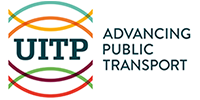
Public transport does not always make life easy for itself. Once you’ve made the decision to travel by public transport, you may often need to arm yourself with a good deal of patience to find out how and where you can buy a ticket and one that is appropriate for your intended journey.
Making life easier for the passenger was part of the philosophy behind the ‘OV-chipkaart’ (or public transport chip card) in the Netherlands. Back in 2001, the Netherlands decided to do away with its zoned paper tickets and replace them with a nationwide smartcard system, offering passengers the possibility to access all public transport modes, from regional buses to urban metro systems and the national railway network via a single card.
Rolled out nationwide in 2005, the system now counts 14.5 million cards, 3 million unique users per week and processes a staggering 2.4 billion ‘transactions’ (check-in, check-out and load transactions) each year.
The smartcard has delivered numerous benefits for passengers, explains Arco Groothedde, CEO of Translink, the company behind the OV-chipkaart. These benefits include access to all public transport modes with one card, better security via ticket gates, fairer fares (passengers pay per kilometre travelled) and the possibility to adapt supply to demand thanks to the collection of big data on passenger journeys across the country.
There have also been major benefits for operators, including the ability to massively reduce fare evasion and increase security in stations thanks to the need for passengers to check in and out at the start and end of every journey, as well as rapidly speeding up revenue distribution between operators, which was a major bugbear before the introduction of the smartcard.
With technology, everything is possible, but looking back it would have been better to simplify the tariff structure beforehand.
Since the introduction of the technology in 2005, there has been a significant increase in passenger numbers that Groothedde attributes partly due to reduced fare evasion.
Customers have seemingly taken to the OV-chipkaart and it was recently awarded a satisfaction rating of 7.9. Groothedde, however, warns that it took several years of continuous improvement to get to that point.
“It takes time for cities or countries to get accustomed to this kind of technology,” he says. “We’ve faced many challenges from customer care to security and hacking as well as new technologies: it’s a multi-year journey and does take some appetite for investment."
"With technology, everything is possible, but looking back it would have been better to simplify the tariff structure beforehand", he adds. “Each public transport operator has its own special tariff products and it can get complicated for the user”.
The lessons that have been learned in the Netherlands are now crossing the Atlantic to Canada, where Translink is exchanging its experiences with Toronto in the implementation of its own smart ticketing system, PRESTO.
The constant and rapid evolution in technology means that the OV-chipkaart will not be standing still and Translink is already looking ahead. “Technology is changing faster than we can implement it on a national scale,” says Groothedde.
The technology behind the smartcard has been around for 15 years now, so by the end of 2016, Translink is looking to introduce technology to enable payment by smartphone or contactless bank cards. Another step forward in providing greater choice for public transport users.
UITP is actively engaged in helping to advance smart ticketing technology through its involvement with the Smart Ticketing Alliance. Find out more about the STA’s activities here.
About International Association of Public Transport
UITP member companies in North America include some of the region’s largest operators in metro (New York, Boston, Washington, Montreal and Toronto) and light rail systems (Phoenix, Salt Lake City, Honolulu, Edmonton and Vancouver). UITP opened its first office in North America in New York City in 2015 to support the growth of urban transit in the region and will hold its flagship event, the Global Public Transport Summit, in Montreal in May 2017. Find out more about UITP’s activities in North America.




Comments
There are no comments yet for this item
Join the discussion